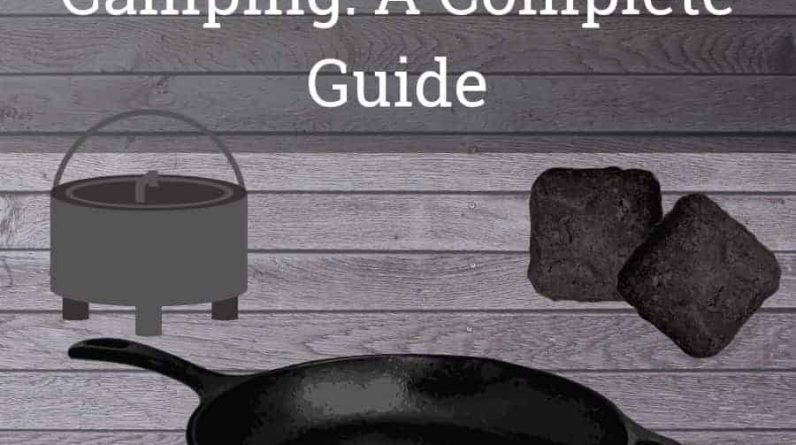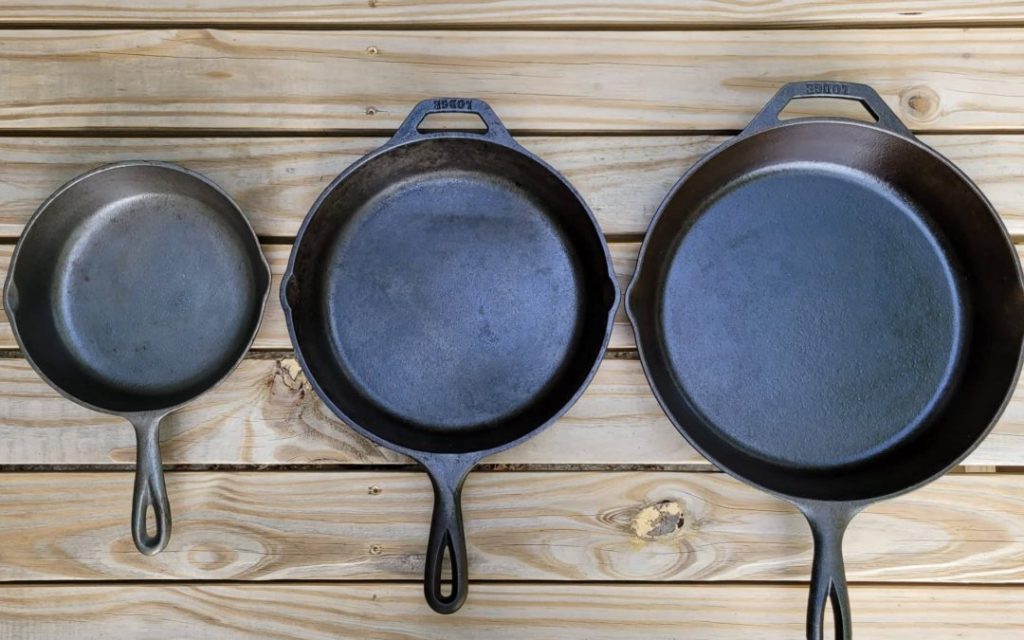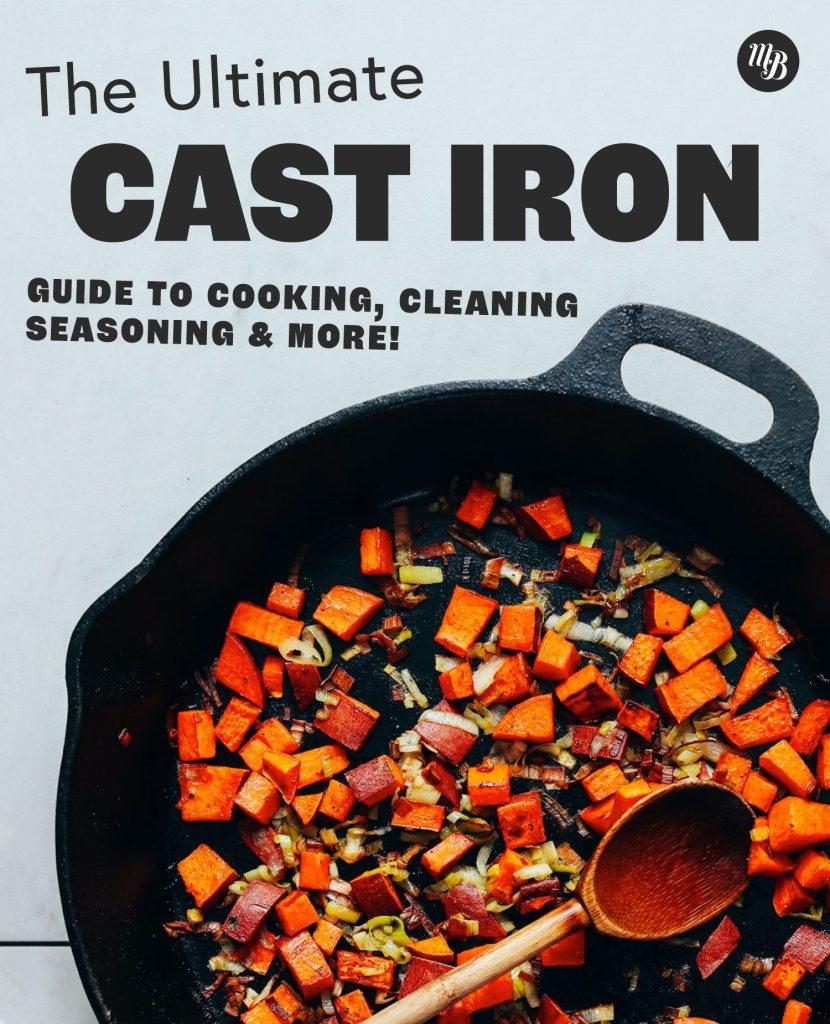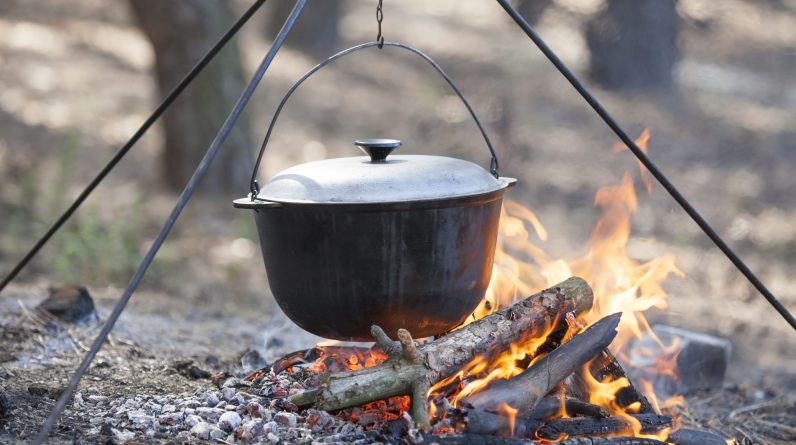
In this article, we will explore the different methods and techniques to season and care for cast iron cookware specifically for campfire cooking. You will learn about the importance of seasoning, how to properly season your cookware, and the benefits it provides. We will also discuss the best practices for cleaning and storing your cast iron cookware, ensuring its longevity and optimal performance. By the end of this article, you will be equipped with the knowledge and tips to keep your cast iron cookware in top-notch condition for your campfire cooking adventures.

This image is property of campfiresandcastiron.com.
A Guide to Seasoning and Caring for Cast Iron Cookware for Campfire Cooking
Seasoning and caring for your cast iron cookware is essential for maintaining its quality and longevity, especially when it comes to campfire cooking. In this guide, we will walk you through the different types of cast iron cookware, how to properly clean and care for it, the importance of seasoning, using cast iron cookware over a campfire, common mistakes to avoid, reviving neglected or rusty cast iron cookware, tips for prolonging its lifespan, alternative seasoning methods, and conclude with final thoughts on seasoning and caring for cast iron cookware for campfire cooking. Let’s dive in!
Different types of cast iron cookware
Before we delve into seasoning and caring for cast iron cookware, it’s important to understand its various types. Cast iron cookware comes in different sizes and shapes, each serving a specific purpose. The most common types include skillets, Dutch ovens, griddles, and campfire pans. Skillets are versatile and perfect for frying, sautéing, and baking. Dutch ovens are great for slow-cooking and roasting. Griddles are ideal for cooking breakfast foods like pancakes and bacon. Campfire pans are specifically designed for open fire cooking. Understanding the types of cast iron cookware available will help you select the right piece for your campfire cooking needs.

This image is property of decideoutside.com.
Selecting the right size and shape
Choosing the right size and shape of your cast iron cookware is crucial for efficient cooking. Consider the number of people you’ll be cooking for and the types of meals you’ll be preparing. For larger groups, a larger Dutch oven or skillet will be necessary. If you plan on cooking a variety of foods, a versatile skillet with a lid will be your best bet. Additionally, consider the size of your campfire and the space available for cooking. A campfire pan or griddle may be better suited for smaller, more compact cooking setups. Selecting the right size and shape will ensure that you have the necessary tools to cook your campfire meals effectively.
Cleaning and caring for cast iron cookware
Properly cleaning and caring for your cast iron cookware is essential for maintaining its seasoning and preventing rust. Here are some key steps to follow:
Properly cleaning cast iron cookware after use
After each use, allow your cast iron cookware to cool completely before cleaning. Avoid using dish soap or harsh detergents, as they can strip away the seasoning. Instead, use warm water and a stiff brush or sponge to gently scrub away food residue. For stubborn stuck-on food, you can use a mild abrasive like salt or baking soda. Rinse the cookware thoroughly and dry it immediately using a towel or by placing it on a low heat source to evaporate any remaining moisture.
Seasoning and re-seasoning cast iron cookware
Seasoning is the process of adding a layer of oil or fat to the surface of your cast iron cookware to create a non-stick coating and protect it from rust. To season your cookware, start by preheating your oven to 350°F (175°C). Apply a thin layer of cooking oil or solid vegetable shortening to the entire surface of the cookware, including the handle. Place the cookware upside down on the middle rack of the oven, with a baking sheet or aluminum foil on the bottom rack to catch any drips. Bake for one hour, then turn off the oven and allow the cookware to cool in the oven. Repeating this process periodically will help maintain the seasoning of your cast iron cookware.
Storing cast iron cookware
When it comes to storing your cast iron cookware, it’s important to keep it in a dry and well-ventilated area to prevent moisture and rust. Avoid stacking or storing heavy objects on top of your cookware, as this can cause damage. If you need to stack your cookware, place a cloth or paper towel between the pieces to prevent them from scratching or scuffing each other. You can also place a desiccant packet or a piece of chalk in the storage area to absorb any excess moisture.

This image is property of Amazon.com.
Seasoning cast iron cookware for campfire cooking
Properly seasoning your cast iron cookware is crucial for campfire cooking. Seasoning creates a protective barrier that prevents food from sticking to the surface and helps distribute heat evenly. Follow these steps to season your cast iron cookware for campfire cooking:
Understanding the importance of seasoning
Seasoning cast iron cookware for campfire cooking is essential because the extreme heat of the campfire can strip away the seasoning. By applying multiple layers of seasoning, you create a stronger and more resilient coating that can withstand the intense heat.
Preparing the cast iron cookware for seasoning
Before seasoning, make sure your cookware is free of any food residue or rust. Use warm water and a stiff brush or sponge to clean the cookware thoroughly. Dry it completely to prevent moisture from interfering with the seasoning process.
Applying the seasoning and curing process
To season your cast iron cookware for campfire cooking, start by applying a thin layer of vegetable oil or shortening to the entire surface, including the handle. Use a cloth or paper towel to spread the oil evenly. Next, place your cast iron cookware upside down on the grate over the campfire. Let it heat up until the oil begins to smoke. This process helps the oil penetrate the pores of the cast iron, creating a smooth and non-stick surface. Repeat this process several times, allowing the cookware to cool between each layer. The more layers of seasoning you add, the better the non-stick coating will be.
Using cast iron cookware over a campfire
Now that your cast iron cookware is properly seasoned, it’s time to use it over a campfire. Here are some tips for successful campfire cooking:
Preparing the campfire for cooking
Before you start cooking, make sure your campfire has burned down to hot coals. You want a consistent and even heat source for efficient cooking. If necessary, move the hot coals to create a designated cooking area.
Using cast iron cookware on an open fire
When cooking with cast iron over a campfire, it’s important to remember that cast iron retains and distributes heat evenly. Take advantage of this by placing your cookware directly on the hot coals or using a cast iron grate or tripod setup. Avoid placing the cookware directly in the flames, as this can cause uneven cooking and potentially damage the seasoning.
Adjusting cooking techniques for campfire cooking
Campfire cooking requires adjusting your cooking techniques compared to traditional stovetop cooking. Cast iron cookware heats up slower but retains heat longer, so be patient and give it time to preheat. Also, keep in mind that campfire cooking can be more unpredictable, with varying heat levels. Pay attention to the food and adjust the distance from the heat source as needed. Use tongs or heat-resistant gloves when handling hot cast iron cookware. With practice, you’ll master the art of campfire cooking with cast iron.

This image is property of campfiresandcastiron.com.
Common mistakes to avoid
To ensure the longevity of your cast iron cookware and its seasoning, avoid these common mistakes:
Using harsh detergents or abrasive materials for cleaning
Avoid using dish soap or harsh detergents when cleaning your cast iron cookware, as they can strip away the seasoning. Similarly, abrasive materials like steel wool or metal scrubbers should be avoided, as they can scratch and damage the surface. Stick to gentle cleaning methods, as mentioned earlier in this guide.
Neglecting to dry cast iron cookware thoroughly
Moisture is the enemy of cast iron cookware, as it can cause rust. Always dry your cookware thoroughly after cleaning. If necessary, place it on a low heat source to evaporate any remaining moisture. Never store cast iron cookware when it’s still damp.
Storing cast iron cookware with moisture
When storing your cast iron cookware, make sure it’s completely dry to prevent rust. Moisture can quickly accumulate if stored in humid or damp areas. Take the time to dry your cookware thoroughly before putting it away.
Maintaining the seasoning of cast iron cookware
To maintain the seasoning of your cast iron cookware, follow these tips:
Consistent use and proper cleaning techniques
Consistently using your cast iron cookware and properly cleaning it after each use will help preserve the seasoning. The more you cook with it, the better the seasoning becomes. Follow the cleaning steps mentioned earlier in this guide to ensure proper care.
Avoiding acidic or highly seasoned foods
Acidic foods like tomatoes or highly seasoned dishes can break down the seasoning of your cast iron cookware. While occasional use is fine, try to avoid cooking acidic or heavily seasoned foods in your cast iron cookware regularly.
Regularly applying a thin layer of oil
After cleaning your cast iron cookware, apply a thin layer of oil to the surface to help maintain the seasoning. You can use any type of cooking oil or solid vegetable shortening. The oil creates a barrier that protects the cookware from moisture and helps maintain its non-stick properties.

This image is property of minimalistbaker.com.
Reviving neglected or rusty cast iron cookware
If you have neglected or rusty cast iron cookware, don’t worry, there are ways to revive it. Follow these steps:
Removing rust from cast iron
To remove rust from your cast iron cookware, start by scrubbing it with steel wool or a stiff brush. If necessary, create a paste using equal parts baking soda and water and scrub the rusted areas. Rinse the cookware thoroughly and dry it completely. If the rust is stubborn, you can try soaking the cookware in a mixture of white vinegar and water overnight. Afterward, scrub and rinse the cookware as usual.
Re-seasoning neglected cookware
Once the rust is removed, re-seasoning your neglected cast iron cookware is crucial. Follow the seasoning steps mentioned earlier in this guide to create a new layer of seasoning. Multiple layers of seasoning will help restore the non-stick properties and protect the cookware from future rust.
Restoring cast iron to its former glory
With proper care and maintenance, your neglected cast iron cookware can be restored to its former glory. Consistently use and clean your cookware, and remember to re-season periodically to maintain its quality and performance.
Tips for prolonging the lifespan of cast iron cookware
Here are some tips to help prolong the lifespan of your cast iron cookware:
Avoid extreme temperature changes
Avoid subjecting your cast iron cookware to extreme temperature changes, as this can cause it to crack or warp. Allow it to heat up slowly and cool down gradually.
Avoid using metal utensils
When cooking with cast iron, it’s best to avoid using metal utensils, as they can scratch and damage the seasoning. Opt for wooden, silicone, or heat-resistant nylon utensils instead.
Avoid stacking or storing heavy objects on top
Never stack or store heavy objects on top of your cast iron cookware, as this can cause it to chip or crack. Treat your cookware with care and store it in a way that prevents any unnecessary damage.
Alternative seasoning methods for cast iron cookware
While the traditional oven seasoning method works well for most cast iron cookware, here are some alternative methods you can try:
Using oven seasoning techniques
In addition to the regular oven seasoning process, you can experiment with different oils or fats. Some people prefer using oils like flaxseed or grapeseed oil. The key is to create a thin, even layer of oil that can withstand high heat.
Seasoning cast iron with flaxseed oil
Flaxseed oil is known for its high smoke point and ability to polymerize, creating a durable seasoning on cast iron. To season with flaxseed oil, follow the same steps as traditional seasoning, but apply multiple thin layers of flaxseed oil, allowing each layer to polymerize before adding the next.
Applying a natural beeswax seasoning
Beeswax can also be used to season cast iron cookware. Melt natural beeswax and apply a thin layer to the cookware. Heat the cookware gently until the beeswax melts and spreads evenly. Allow it to cool, and repeat the process if necessary. Beeswax seasoning creates a natural non-stick coating on the surface of the cast iron.
Conclusion
Caring for and seasoning your cast iron cookware is essential for successful campfire cooking. By understanding the different types of cast iron cookware, selecting the right size and shape, properly cleaning and caring for it, seasoning it for campfire cooking, using it over a campfire, avoiding common mistakes, maintaining the seasoning, reviving neglected or rusty cookware, and following tips for prolonging its lifespan, you can enjoy the benefits of cast iron cookware for years to come. With a little practice, your cast iron cookware will become a treasured tool for delicious campfire meals. Happy cooking!

